
San Luis Obispo is a city and county seat of San Luis Obispo County, in the U.S. state of California. Located on the Central Coast of California, San Luis Obispo is roughly halfway between the San Francisco Bay Area in the north and Greater Los Angeles in the south. The population was 47,063 at the 2020 census.
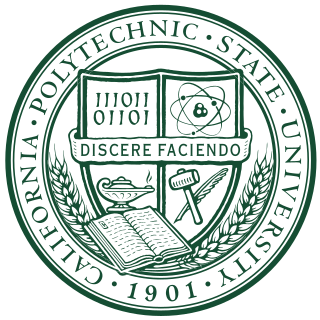
California Polytechnic State University, San Luis Obispo is a public university in San Luis Obispo County, adjacent to the city of San Luis Obispo. It is the oldest of three polytechnics in the California State University system.

California State Polytechnic University, Pomona, is a public polytechnic university in Pomona, California. It is the largest of the three polytechnic universities in the California State University system.

Kristin Denise Smart was an American woman murdered by Paul Flores at the end of her first year on the campus of California Polytechnic State University, San Luis Obispo.

Cuesta College is a public community college in San Luis Obispo County, California.
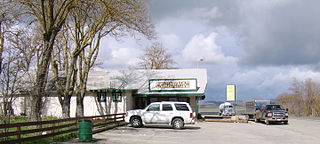
Cholame is an unincorporated community in San Luis Obispo County, California, United States. It sits within a mile of the San Andreas Fault at an elevation of 1,157 feet (353 m) above sea level.
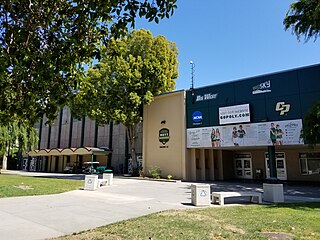
The Robert A. Mott Athletics Center is a 3,032-seat, indoor multi-purpose arena on the campus of California Polytechnic State University in San Luis Obispo, California.
KCPR is a non-commercial radio station that is licensed to San Luis Obispo, California. Owned by California Polytechnic State University in San Luis Obispo, the station is operated by students from its on-campus studio located in the Graphic Arts building. In addition to its FM broadcast, KCPR streams its programming online 24 hours a day and has established a growing social media audience.

Mustang Memorial Field, formerly known as Mustang Stadium and then Alex G. Spanos Stadium, is an 11,075-seat multi-purpose stadium located on the campus of California Polytechnic State University in San Luis Obispo, California. It is the home field of the Cal Poly Mustangs football and soccer teams.

The Battle for the Golden Horseshoe is an annual rivalry college football game played between the UC Davis Aggies and the Cal Poly Mustangs.

The Cal Poly Pomona Broncos or Cal Poly Broncos are the athletic sports teams for the California State Polytechnic University, Pomona.

Mardi Gras in the United States is celebrated in a number of cities and regions in the country. Most of these places trace their Mardi Gras celebrations to French, Spanish, and other Catholic colonial influences on the settlements over their history.

The Cal Poly Mustangs are the football team representing California Polytechnic State University located in San Luis Obispo, California.
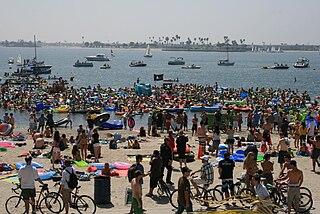
Deltopia, originally known as Floatopia, is a social event started in 2004 which takes place annually in Isla Vista, California. Deltopia was originated by University of California, Santa Barbara students and occurs at the start of UCSB's spring quarter around Del Playa Drive. Participants consist primarily of college students. In early years, attendance was estimated at a few hundred participants with later years seeing an estimated 20,000 to 25,000 attendees.
The "P" is a 50-by-30-foot landmark located atop a northwestern hill of California Polytechnic State University, San Luis Obispo, California. Its creation dates back to the early 1900s, and it has remained on the same hillside ever since.

Warren J. Baker was an American academic administrator who was president of California Polytechnic State University. Baker was the eighth president of Cal Poly San Luis Obispo, holding the office from 1979 until 2010.
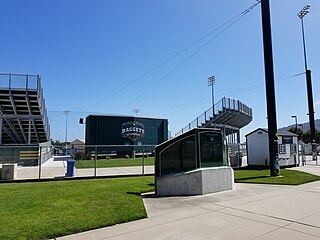
Robin Baggett Stadium is a baseball venue located on the campus of California Polytechnic State University in San Luis Obispo, California, United States. It is home to the Cal Poly Mustangs baseball team, a member of the Division I Big West Conference. The stadium is named for Robin Baggett, a former baseball player at Cal Poly.

The Cal Poly Mustangs are the athletic teams representing California Polytechnic State University in San Luis Obispo, California. The university fields twenty-one teams and compete in NCAA Division I; they are primarily members of the Big West Conference, but the football team plays in the Big Sky Conference, the wrestling team is an associate member of the Pac-12 Conference, and the swimming and diving program competes as an affiliate member in the Mountain Pacific Sports Federation.
The 2004 Cal Poly Mustangs football team represented California Polytechnic State University during the 2004 NCAA Division I-AA football season.
The 2005 Cal Poly Mustangs football team represented California Polytechnic State University during the 2005 NCAA Division I-AA football season.















